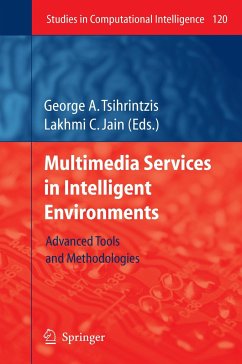
Intelligent Multimedia Analysis for Security Applications

PAYBACK Punkte
57 °P sammeln!
The advances in the generation and processing of multimedia data (e. g. documents, images, video, audio, animations, etc. ) have had an immense impact on multimedia applications and, as a result, multimedia has permeated almost every aspect of our daily lives. This development has also brought with it a whole host of issues and ch- lenges which were either not as apparent before or were non-existent. Today, digital media is relied upon as primary news and information resource, as evidence in a court of law, as part of medical records or as financial documents. However, there is still lack of a...
The advances in the generation and processing of multimedia data (e. g. documents, images, video, audio, animations, etc. ) have had an immense impact on multimedia applications and, as a result, multimedia has permeated almost every aspect of our daily lives. This development has also brought with it a whole host of issues and ch- lenges which were either not as apparent before or were non-existent. Today, digital media is relied upon as primary news and information resource, as evidence in a court of law, as part of medical records or as financial documents. However, there is still lack of authoritative mechanisms to verify the origin and veracity of media data. - deed, multimedia content has become an extremely valuable asset, and it is being both disseminated and consumed on a larger scale than ever before, but the issues conce- ing how the content owners and publishers should control the distribution of and - cess to their content have not been satisfactorily resolved yet. There are various other issues related to use of multimedia that require further analysis and research. For example, it is a known fact that some criminal organi- tions communicate with its members by posting information embedded media to p- lic forums and web-sites to evade surveillance by law enforcement. Conventional multimedia processing approaches do not provide sufficiently effective means for - fending against such communication.














